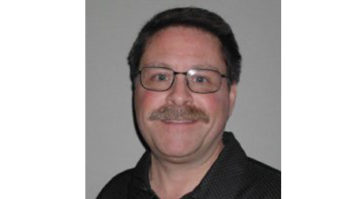IBOC and combiners
Jun 1, 2002 12:00 PM, By John Battison, P.E., technical editor, RF
The engineering fraternity now knows the NRSC’s opinion concerning the use of AM IBOC at night. This was a decision that surprised a number of engineers. However, nighttime AM IBOC is not dead, it is merely delayed for further investigation.
The NRSC’s optimistic report on FM IBOC has been out for several months. Some transmitter manufacturers have already announced the availability of FM IBOC transmitting equipment, and offered actual equipment at the NAB show. FM IBOC requires considerably more equipment than the AM version, and it is more expensive.
In general, vacuum-tube operated AM transmitters do not appear to have sufficient linearity to pass the IBOC waveform satisfactorily, while AM transmitters using PDM and solid-state AM transmitters using digital modulation appear to require only minor modifications to pass the IBOC waveform. This means that many smaller and older stations using tube transmitters may have to purchase new transmitters if they are going to radiate an acceptable signal. The exclusion of AM IBOC from nighttime operation at present may cause a delay in getting a number of these smaller stations on the air. The area in which many of these AM stations need signal improvement is at night and the added cost of introducing IBOC, which would produce no improvement in night service, will probably not be attractive to licensees.
The Shively IBOC filter-injector balances the coupling losses to the analog and digital signals.

AM problems and FM considerations
The average small market AM station may fail to meet the IBOC requirements of wide bandwidth and minimum phase distortion. Many AM stations, especially directional stations, have bandwidth and phase distortion that are less than perfect. If the frequency response falls off at higher frequencies, a transmitter will have difficulty handling the IBOC waveform.
IBOC hybrid FM signals can be produced by three different methods: high-level combining, low-level combining and the use of separate antennas.
Low-level combining is probably the simplest and least expensive of the three FM IBOC methods. To accomplish this, an existing FM analog exciter has its output combined with the output from a separate IBOC exciter. These signals are then fed into a low-level combiner followed by a broadband power amplifier. This method reduces the equipment required, as well as saving on power consumption, but it requires a highly linear RF amplifier.
Existing high-powered FM stations may prefer to use the high-level system, which takes advantage of an operating high-powered FM transmitter and also requires a high-power combiner, filter and IBOC amplifier.
With high-level combining, there is a loss of about 10 percent of analog power and about 90 percent of the digital power to the reject load. The combiner with its reject load leg appears to be an unfortunate feature of IBOC operation. It is the required 10dB coupling figure that necessitates what seems to be an unfortunate inefficiency in IBOC.
The third method of obtaining FM IBOC operation uses two transmitting antennas. This method of operation is still being examined, but early tests appear to show that at least 40dB of isolation between the two antennas is required. If this method can be used commercially it could make IBOC attractive to stations that have room for another antenna on their towers and additional equipment in the transmitter building. Separate antenna operation would not require the cost of a combiner, or the generation of power that is ultimately lost in the reject load.
Combiners
Several manufacturers have paid a great deal of attention to the development of the hybrid combiners specifically for high-power broadband FM IBOC operation. At this stage in the development of FM IBOC, it appears that a 7dB or 10dB coupling level will be used for commercial operation. However, most manufacturers of combiners offer various coupling levels covering suitable ranges and power levels. The physical size of combiners depends on the individual manufacturer’s design, but they seem to be smaller than combiners used with regular FM and transmitters.
Electronics Research Inc. (ERI) offers several versions of its IBOX hybrid combiner. The high-power version handles an analog input of 55kW with 40dB of isolation between the analog and digital inputs and only -0.46dB nominal coupling between the analog input and the antenna output. Its size is surprisingly small � only about 42 inches by 15 inches overall.
For medium-power installations, the IBOX medium-power hybrid combiner handles 30kW of analog power with -10dB of coupling between the digital input and antenna output. Other operating parameters are similar to those for the high-power model, and customized versions with various coupling conditions and power levels are available.
Shively Labs has developed an Injector Filter IBOC combiner. This device combines the low-level digital signal with the high-level analog signal and dumps the excess signal in the reject load. A one-eighth wavelength (?/8) coupling loop is used in this device, and the overall size is only about 20 inches by six inches.
The Shively injector filter comes with a standard 3?-inch coaxial connector and ?-inch coaxial input for the digital signal. The standard 3-inch unit will handle 35kW analog input and 5kW digital input. The reject load is not supplied by Shively, but a good rule of thumb is to use a reject dummy load capable of handling about ? of the input analog power. Thus, a 30kW analog transmitter would require about a 10kW reject load.
Dielectric Communications has also spent a lot of time working on IBOC. Dielectric offers a 10dB hybrid injector/combiner that allows high-level combining of the analog and digital transmissions. Dielectric also offers a low-level combiner for use in IBOC systems that uses a common linear amplifier and that does not need to separate high-operating powers.
Dielectric’s experience in the development of HDTV transmission has led to the development of another type of shaping device in the formal, off-elliptic function filters. These filters, a combination of combiner and mask filter, form supplemental masking filters that may help to provide isolation at band edges where there is insufficient bandwidth limiting.
E-mail Battison at[email protected].
More Online
Find links to the two NRSC reports at www.beradio.com under Site Features.





